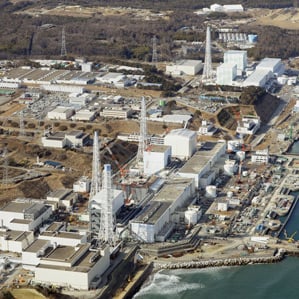The Fukushima disaster led Japan to shut down nuclear power plants, but three years of rising costs and carbon dioxide emissions are forcing it to reverse course.
Why It Matters
Shifting to nuclear power from fossil fuels greatly reduces greenhouse gas emissions.
Three years later: An aerial photo taken on March 11, 2014, shows what remains of the Fukushima Daiichi nuclear power station on the third anniversary of an earthquake and tsunami that led to a major crisis at the plant.
In the three years since the disaster at the Fukushima Daiichi nuclear power plant, Japan has tried to replace nuclear energy with fossil fuels. But the costs have proved prohibitive, and now the government is convinced it must turn its reactors back on.
Prior to the devastating earthquake, tsunami, and meltdowns, Japan was a nuclear powerhouse. In 2010, its 54 reactors generated 31 percent of the island nation’s electricity and 10 percent of the world’s nuclear power.
After the disaster, the government ordered all reactors to be shut down for stress testing to determine whether they could survive extreme events, and only two have since been restarted. In 2012, the prime minister said Japan would phase out nuclear power entirely by 2030.
The hole made by shuttering the nuclear industry has been filled with coal, natural gas, and oil.
Japan has virtually no fossil fuel resources of its own, though, and must buy its fuel from other countries. In 2012, the most recent full year for which the Energy Information Agency has data, Japan was the second-largest fossil fuel importer in the world, behind China. Between 2010 and 2012 annual oil imports rose 4 percent, and imports of liquefied natural gas increased by 24 percent.
Because of this, the cost of power generation in 2012 was $30 billion higher than it was in 2010—a 41 percent jump, according to a report by the Institute of Energy Economics in Japan.
Burning more fossil fuels also means more carbon dioxide emissions. The increase seen in Japan since the Fukushima disaster has been the largest in 20 years. In 2012, Japan’s emissions were up by 6 percent over the previous year.
A draft energy plan published last month put nuclear back at the center of the country’s energy plans, and restarting shuttered reactors has now become a priority. Utility companies have applied to restart 17 reactors.
But given the stricter safety regulations put in place since Fukushima, Japan’s nuclear industry will have an uphill climb. Restarting each reactor could cost around $1 billion in fees and will require a six-month review by the new Nuclear Regulation Authority. In the most optimistic scenarios, Japan might be able to fire up 10 reactors per year.




Nenhum comentário:
Postar um comentário
Observação: somente um membro deste blog pode postar um comentário.